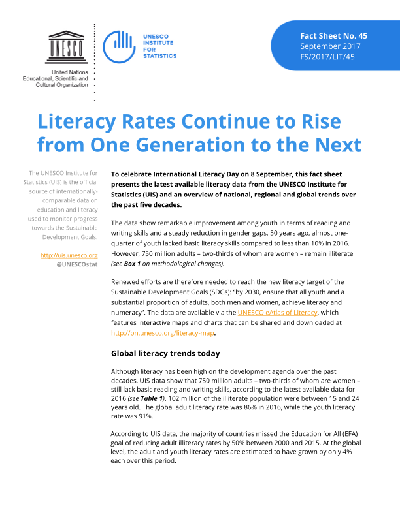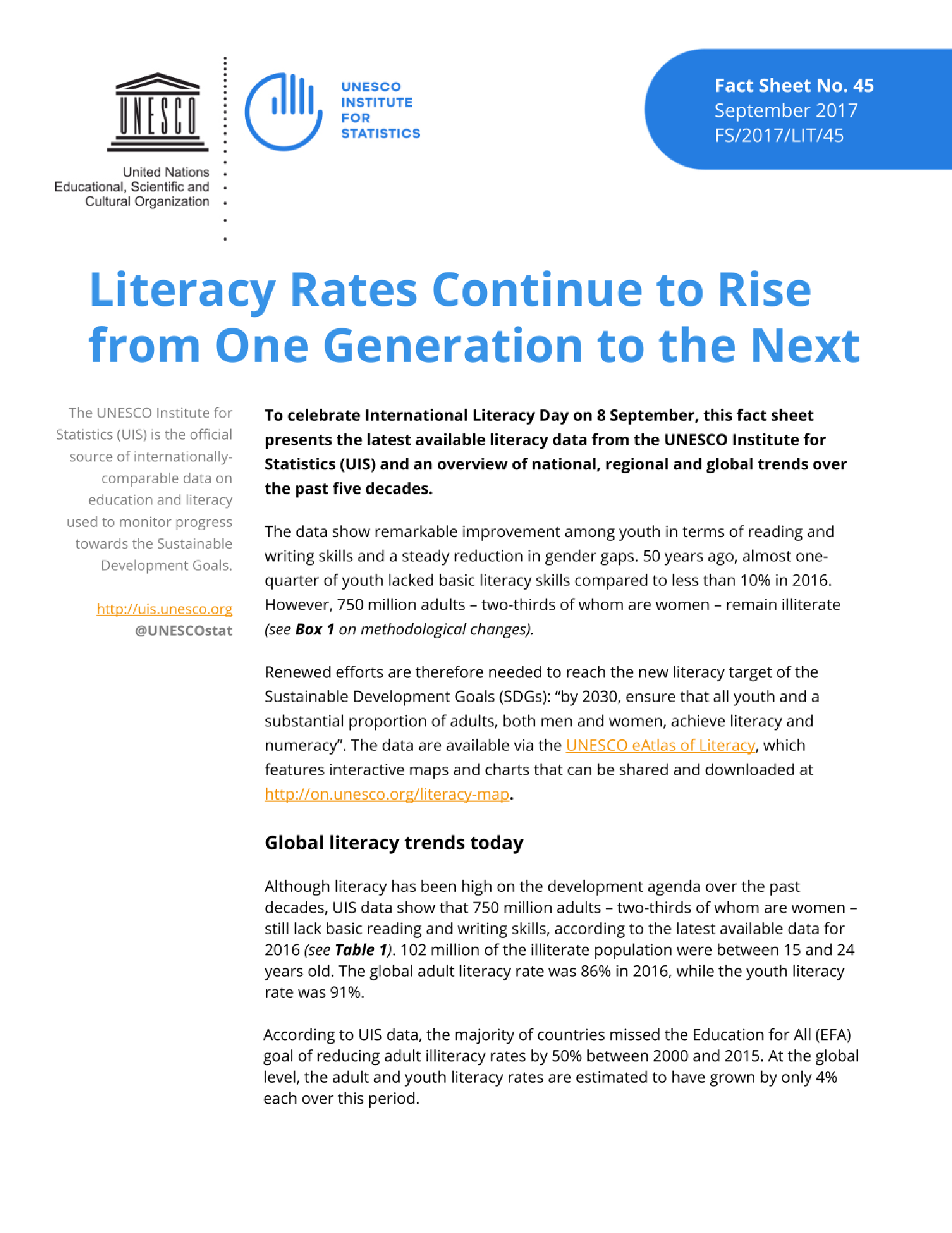



收藏
纠错
为了庆祝9月8日的国际扫盲日,本简介介绍了教科文组织统计研究所(教科文组织统计研究所)提供的最新扫盲数据,以及过去50年来国家、区域和全球趋势的概况。
识字率一代比一代持续上升 To celebrate International Literacy Day on 8 September, this fact sheet presents the latest available literacy data from the UNESCO Institute for Statistics (UIS) and an overview of national, regional and global trends over the past five decades. The data show remarkable improvement among youth in terms of reading and writing skills and a steady reduction in gender gaps. 50 years ago, almost one- quarter of youth lacked basic literacy skills compared to less than 10% in 2016. However, 750 million adults - two-thirds of whom are women - remain illiterate (see Box 1 on methodological changes). Renewed efforts are therefore needed to reach the new literacy target of the Sustainable Development Goals (SDGs): "by 2030, ensure that all youth and a substantial proportion of adults, both men and women, achieve literacy and numeracy". Global literacy trends today Although literacy has been high on the development agenda over the past decades, UIS data show that 750 million adults - two-thirds of whom are women - still lack basic reading and writing skills, according to the latest available data for 2016 (see Table 1). 102 million of the illiterate population were between 15 and 24 years old. The global adult literacy rate was 86% in 2016, while the youth literacy rate was 91%. 【更多详情,请下载:识字率一代比一代持续上升】
